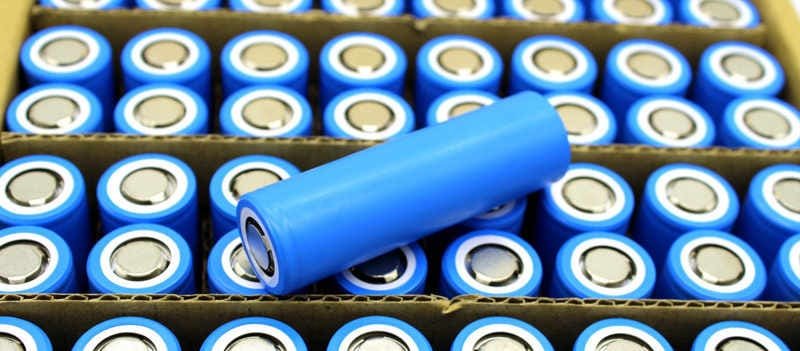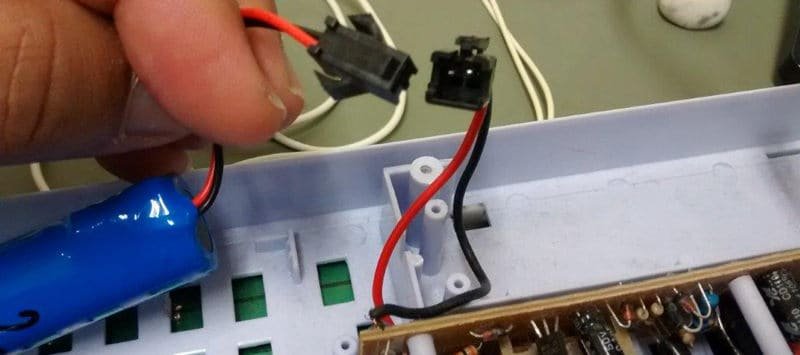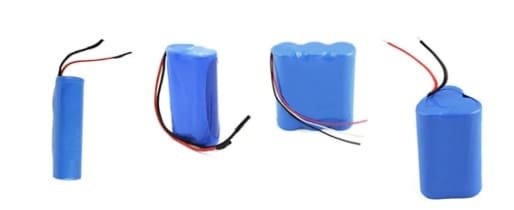Are you considering using cylindrical lithium-ion batteries for your next project? If so, it’s important to understand the different sizes available and how they can be used to meet your specific requirements. In this comprehensive guide, we will walk you through everything you need to know about cylindrical lithium-ion battery sizes.
From the popular 18650 to the smaller 14500 and larger 26650, we’ll explore the most common sizes used in various applications . Whether you’re an engineer, designer, or hobbyist, this guide will equip you with the knowledge to make informed decisions when it comes to selecting the right battery size for your needs.
Not only will we discuss the physical size and capacity of each size battery, but we’ll also delve into their benefits, limitations, and compatibility with different devices. By the end of this guide, you will have a clear understanding of which size cylindrical lithium-ion battery is best for your specific application.
The Complete Guide to Cylindrical Lithium-Ion Battery Sizes

Common Cylindrical Lithium-ion Battery Sizes and Their Applications
Cylindrical lithium-ion batteries come in a variety of sizes, and its number usually indicates its physical size. The first two digits are the diameter of the battery in millimeters, the last two digits are generally the height in millimeters, and the fifth digit indicates the cylindrical shape. For example, the 18650 cylindrical battery has a diameter of 18 mm and a height of 65 mm, with 0 indicating cylindrical shape. This complies with the IEC standard for cylindrical primary cells. Manufacturers can also use non-IEC names for their products.
1.10440
The 10440 battery is a lithium-ion battery with a diameter of 10mm and a height of 44mm. It usually has a small capacity of only a few hundred mAh. This type of battery is ideal for devices that require a compact power source and is mainly used in small electronic products such as micro flashlights, mini stereos, speakers, etc.
2.14500
The 14500 battery is a lithium-ion battery with a diameter of 14mm and a height of 50mm, similar in size to an AA battery. The nominal capacity is usually below 1000mAh. It is widely used in various consumer electronic products, such as LED flashlights, wireless speakers, wireless keyboards, electric toys, digital cameras, etc.
3.16500
The 16500 battery is a lithium-ion battery with a diameter of 16mm and a height of 50mm. Capacity is usually slightly higher than 14500.Commonly used in flashlights, headlights, laser lights, lighting fixtures, etc.
4.18650
The 18650 battery is perhaps the most popular cylindrical lithium-ion battery size. It has a diameter of 18 mm and a length of 65 mm. The nominal capacity is usually between 1500~3500mAh. It offers a balance between capacity and size. 18650 is widely used and is the first choice for many electronic devices. It is commonly used in applications such as laptops, flashlights, power tools, e-scooters and e-bikes.
5.21700
The 21700 is a lithium-ion battery with a diameter of 21 mm and a height of 70 mm. The nominal capacity of the battery is generally between 3000 and 5000mAh. Widely used in solar street lights, LED lights, balance vehicles, electric bicycles, electric vehicles, etc.
21700 is larger and has higher capacity than 18650, and its volume and energy density are higher than 18650 battery. Therefore, some products will use 21700 instead of 18650 batteries in their power supply design.
6.26650
If you need a larger cylindrical lithium-ion battery, the 26650 size may be the right choice. With a diameter of 26mm and a length of 65mm, it offers a higher capacity than the 18650 battery. This size is commonly used in high-power devices such as electric vehicles, solar energy storage systems, and power banks. It can also be used for larger high-power LED flashlights and some electronic cigarettes. The 26650 battery’s larger size allows for more energy storage, making it suitable for applications that require extended runtimes.

Understanding Battery Dimensions and Specifications
1. Diameter: The diameter of a cylindrical lithium-ion battery determines its physical size and compatibility with devices and battery holders. Common diameters include 18mm, 14mm, and 26mm for 18650, 14500, and 26650 cell sizes respectively.
2.Length: The length of a cylindrical lithium-ion battery also affects its physical size and compatibility. Longer batteries generally have higher capacities but may not be suitable for all devices. For example, the 18650 and 26650 cells are 65 mm long, while the 14500 cell is 50 mm long.
3.Capacity: Battery capacity is a measure of the amount of energy a battery can store. Usually measured in milliamp hours (mAh) or ampere hours (Ah). The capacity of cylindrical lithium-ion batteries varies depending on their size, with larger batteries generally having higher capacities. For example, 18650 batteries range in capacity from 1500mAh to 3500mAh, while 14500 batteries typically have a capacity around 800mAh.
4.Voltage: Voltage is another important parameter to consider when choosing a cylindrical lithium-ion battery. Most have a nominal voltage of 3.7 volts, but their voltage will vary depending on the charge level.
5.Discharge current: The discharge current is the maximum current that a battery can deliver continuously. It is usually measured in amperes (A) or milliamperes (mA). High-power applications require batteries with higher discharge currents, while low-power devices can work with lower discharge currents.

Factors to consider when selecting cylindrical lithium-ion battery size
1.Application requirements: First understand the specific requirements of the application. Consider factors such as power consumption, voltage requirements, and physical space constraints. High-power applications such as electric vehicles may require larger batteries, while low-power devices can use smaller batteries.
2.Size and weight: Consider the physical size and weight limitations of the device. Smaller batteries (such as the 14500) may be suitable for compact devices, while larger batteries (such as the 26650) may be more appropriate for devices with ample space.
3.Energy Density: Energy density refers to the amount of energy stored in a battery per unit volume or weight. If you need a battery with a high energy density, you may opt for a larger size like the 18650 or 26650. However, keep in mind that higher energy density often comes at a higher cost.
4.Cost: Consider your budget when selecting a cylindrical lithium-ion battery size. Larger batteries with higher capacities tend to be more expensive. Evaluate the cost-benefit ratio and choose a size that offers the best balance between price and performance.
5.Availability and Compatibility: Ensure that the battery size you choose is readily available and compatible with your device or application. Some battery sizes, such as the 18650, have a wide range of options from various manufacturers, making them easily accessible.
With these factors in mind, you can narrow down your choices to a cylindrical lithium-ion battery that suits your specific needs.

Advantages and Disadvantages of Different Cylindrical Lithium-ion Battery Sizes
18650 battery:
Advantages:
– High energy density, making them suitable for high-power applications.
– Widely available from various manufacturers.
– Long cycle life, allowing for extended use.
– Compatible with many devices and applications.
– Established safety standards and protection circuits.
Disadvantages:
– Larger size and weight compared to smaller batteries.
– Higher cost compared to smaller batteries.
14500 battery:
Advantages:
– Compact size, making them suitable for space-constrained devices.
– Can be used as a direct replacement for AA batteries.
– Compatible with standard AA battery holders.
– Lower cost compared to larger batteries.
Disadvantages:
– Lower capacity compared to larger batteries.
– Limited options from manufacturers compared to the 18650.
26650 battery:
Advantages:
– Larger capacity, providing longer runtimes.
– Suitable for high-power applications.
– Can handle higher discharge currents.
– Higher energy density compared to the 18650.
Disadvantages:
– Larger size and weight, limiting compatibility with some devices.
– Limited availability compared to the 18650.

Conclusion
Selecting the right cylindrical lithium-ion battery size is crucial for achieving optimal performance and meeting the requirements of your specific application. By considering factors such as application requirements, size and weight, energy density, cost, and compatibility, you can make an informed decision.
Please note that when device manufacturers require battery packs composed of cylindrical lithium-ion cells, they should take into account that there are usually circuit protections inside the battery pack to prevent over-discharge and short-circuit damage, etc. This will increase battery size. It’s best for a battery pack to fit snugly to the device it serves. Therefore, some device manufacturers will consider these factors when designing their products and, if necessary, customize their own battery packs for their devices. NBCELL often provides cost-effective customized lithium-ion battery packs to our customers. If you need this, please contact us.
With the knowledge provided in this comprehensive guide, hopefully you can choose the battery size that best suits your project. If you still have questions, you can contact us and we will provide you with more detailed and professional advice.
